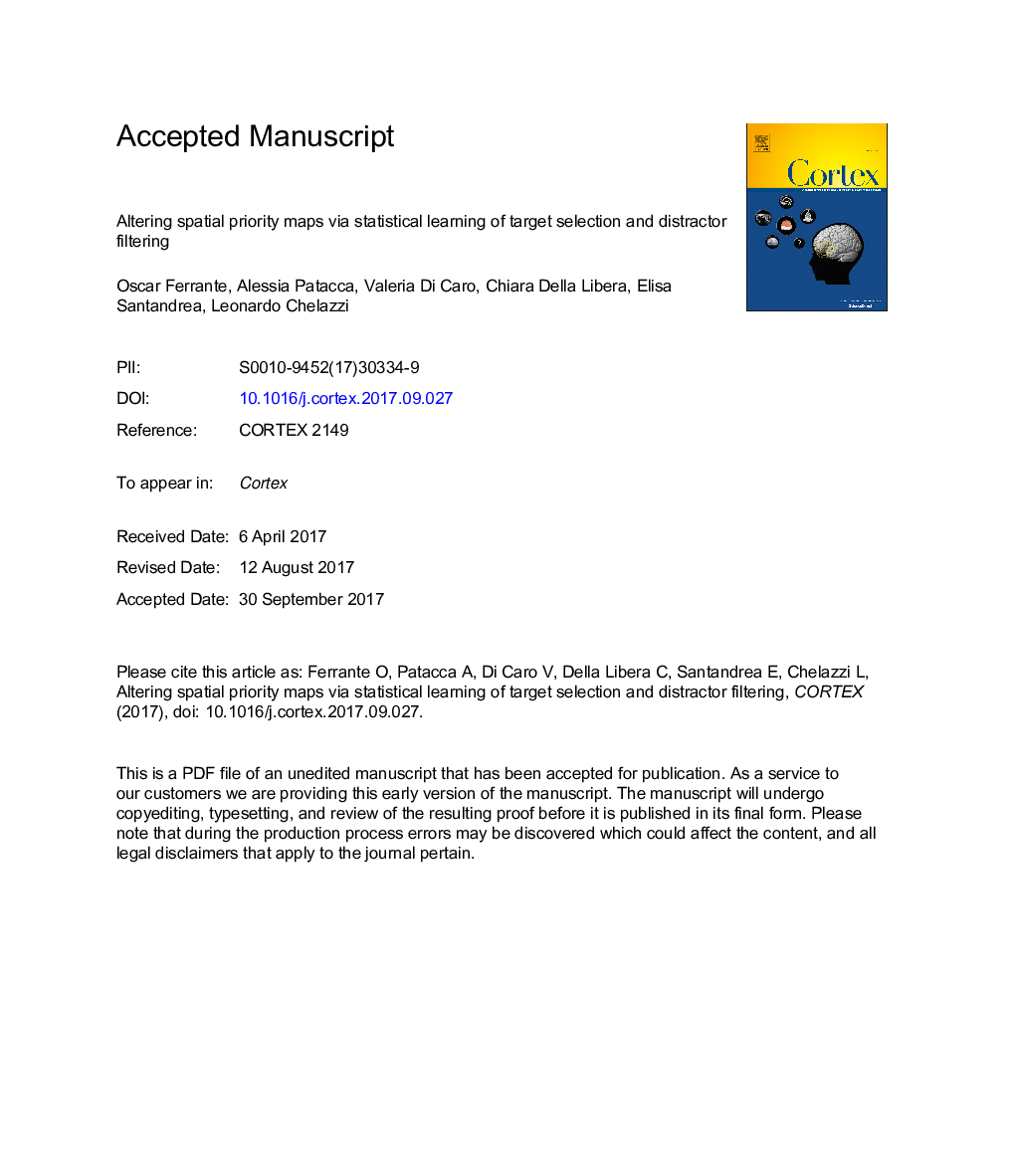| کد مقاله | کد نشریه | سال انتشار | مقاله انگلیسی | نسخه تمام متن |
|---|---|---|---|---|
| 7311604 | 1475430 | 2018 | 88 صفحه PDF | دانلود رایگان |
عنوان انگلیسی مقاله ISI
Altering spatial priority maps via statistical learning of target selection and distractor filtering
ترجمه فارسی عنوان
تغییر نقشه های اولویت فضایی از طریق یادگیری آماری از انتخاب هدف و فیلتر کردن حواس پرتی
دانلود مقاله + سفارش ترجمه
دانلود مقاله ISI انگلیسی
رایگان برای ایرانیان
کلمات کلیدی
احتمال پذیرش، انتخاب هدف، فیلتر کردن رگولاتور، ضبط ذهنی، نقشه های اولویتی،
موضوعات مرتبط
علوم زیستی و بیوفناوری
علم عصب شناسی
علوم اعصاب رفتاری
چکیده انگلیسی
The cognitive system has the capacity to learn and make use of environmental regularities - known as statistical learning (SL), including for the implicit guidance of attention. For instance, it is known that attentional selection is biased according to the spatial probability of targets; similarly, changes in distractor filtering can be triggered by the unequal spatial distribution of distractors. Open questions remain regarding the cognitive/neuronal mechanisms underlying SL of target selection and distractor filtering. Crucially, it is unclear whether the two processes rely on shared neuronal machinery, with unavoidable cross-talk, or they are fully independent, an issue that we directly addressed here. In a series of visual search experiments, participants had to discriminate a target stimulus, while ignoring a task-irrelevant salient distractor (when present). We systematically manipulated spatial probabilities of either one or the other stimulus, or both. We then measured performance to evaluate the direct effects of the applied contingent probability distribution (e.g., effects on target selection of the spatial imbalance in target occurrence across locations) as well as its indirect or “transfer” effects (e.g., effects of the same spatial imbalance on distractor filtering across locations). By this approach, we confirmed that SL of both target and distractor location implicitly bias attention. Most importantly, we described substantial indirect effects, with the unequal spatial probability of the target affecting filtering efficiency and, vice versa, the unequal spatial probability of the distractor affecting target selection efficiency across locations. The observed cross-talk demonstrates that SL of target selection and distractor filtering are instantiated via (at least partly) shared neuronal machinery, as further corroborated by strong correlations between direct and indirect effects at the level of individual participants. Our findings are compatible with the notion that both kinds of SL adjust the priority of specific locations within attentional priority maps of space.
ناشر
Database: Elsevier - ScienceDirect (ساینس دایرکت)
Journal: Cortex - Volume 102, May 2018, Pages 67-95
Journal: Cortex - Volume 102, May 2018, Pages 67-95
نویسندگان
Oscar Ferrante, Alessia Patacca, Valeria Di Caro, Chiara Della Libera, Elisa Santandrea, Leonardo Chelazzi,
